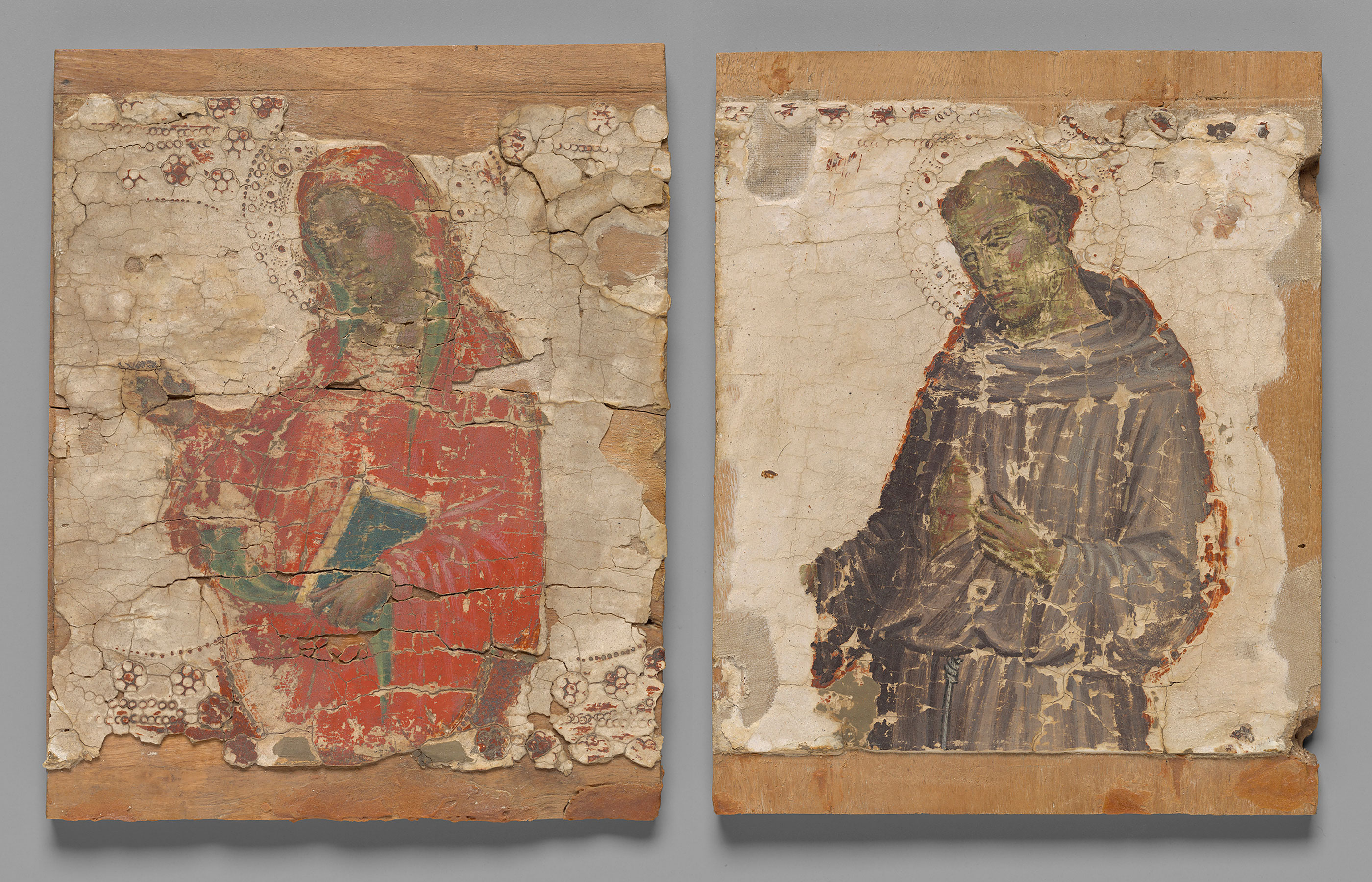View Saint Mary Magdalen and Saint Francis in the Yale University Art Gallery’s online collection.
Andrew F. Petryn (1918–2013), by 2016
Saint Mary Magdalen is painted on a panel of horizontal wood grain, thinned irregularly to between 11 and 13 millimeters; Saint Francis is painted on a panel of vertical wood grain, thinned irregularly to between 11 and 14 millimeters. The picture surfaces of both have suffered extensive damage from abrasion and caustic cleaning. The original silver ground is almost entirely obliterated, and the gesso substrate is, in many places, losing its adherence to the panel support. Little more than the outlines of the figures and their general forms remain legible.
These two panels are unknown to the literature of Sienese painting except for their passing mention in Sherwood Fehm’s catalogue of works by Luca di Tommè, where they are listed as shop works and misidentified as Saints Francis and Catherine.1 Although very little can be read of the painting style of the two figures, it is clear that they have nothing in common with the work of Luca di Tommè. Their reattribution here to Martino di Bartolomeo is based on the occurrence of a punch tool—Mojmír Frinta’s no. L48—among the impressions of the original decoration of the silver ground still visible in the gesso layer around the edges of the picture fields, a punch used repeatedly by that artist in paintings made both for Sienese and Pisan patrons.2 While the style of the figures, to the extent that it remains visible, supports this attribution, it does not permit finer judgments of chronology. A date during the artist’s Pisan period, however, might be suggested by the unusual hexafoil shape of the fields in which the figures appear. Without parallel among known Sienese altarpieces, the form is repeated in the gable decoration of several Pisan structures at the turn of the fourteenth century. That the Saint Mary Magdalen is a fragment of a predella and not removed from a gable or other framing elements of an altarpiece may be inferred from the horizontal wood grain of its support and from the punched horizontal decorative bands cropped at the top and bottom edges of its decorated surface. The gesture of that saint, furthermore, might imply that she was once positioned to the right of an image of the Man of Sorrows. —LK
Published References
Fehm, Sherwood A., Jr. Luca di Tommè: A Sienese Fourteenth-Century Painter. Carbondale: Southern Illinois University Press, 1986., 161
Notes
-
Fehm, Sherwood A., Jr. Luca di Tommè: A Sienese Fourteenth-Century Painter. Carbondale: Southern Illinois University Press, 1986., 161. ↩︎
-
Frinta, Mojmír S. Punched Decoration on Late Medieval Panel and Miniature Painting. Vol. 1, Catalogue Raisonné of All Punch Shapes. Prague: Maxdorf, 1998., 484. ↩︎
